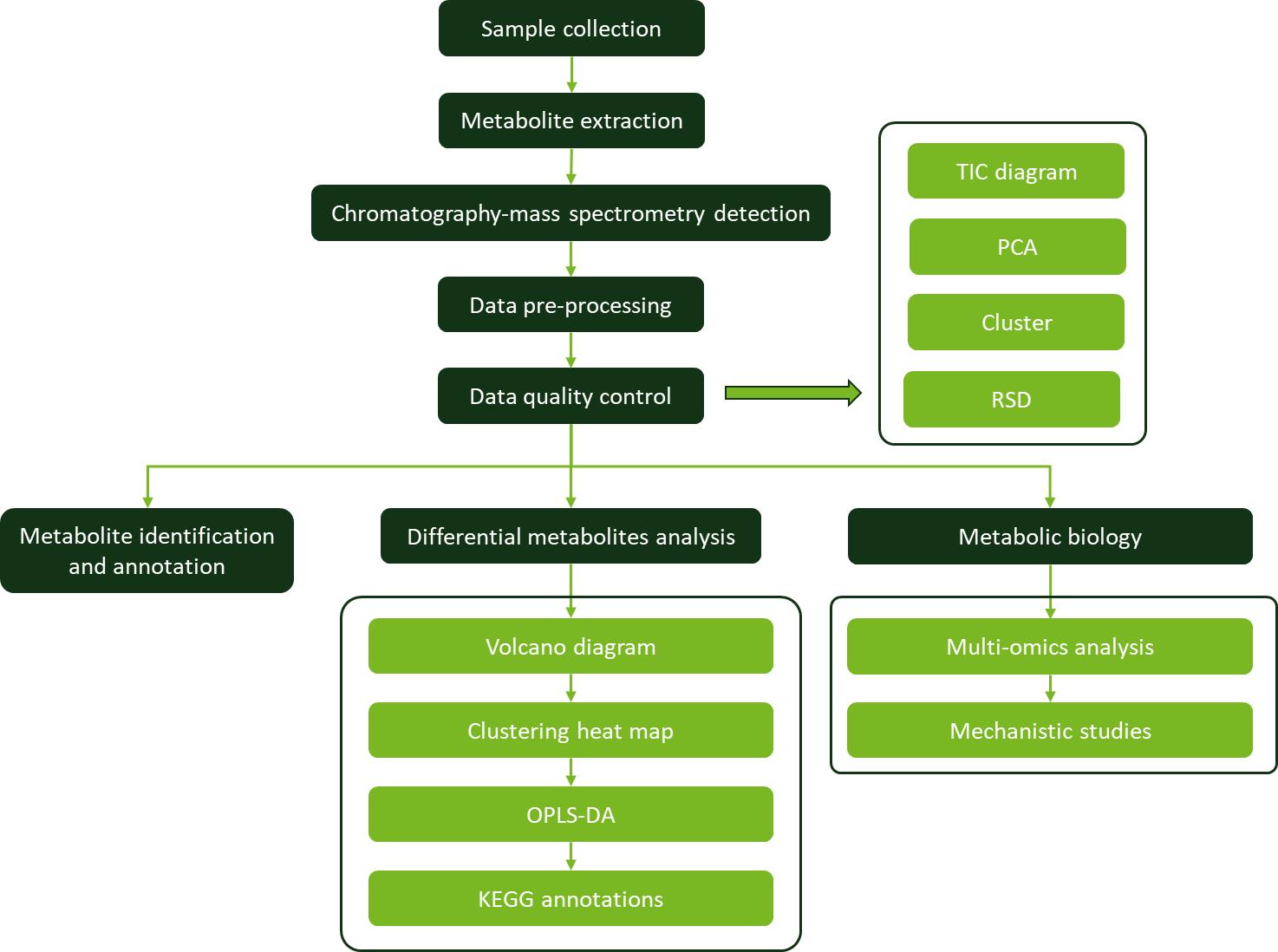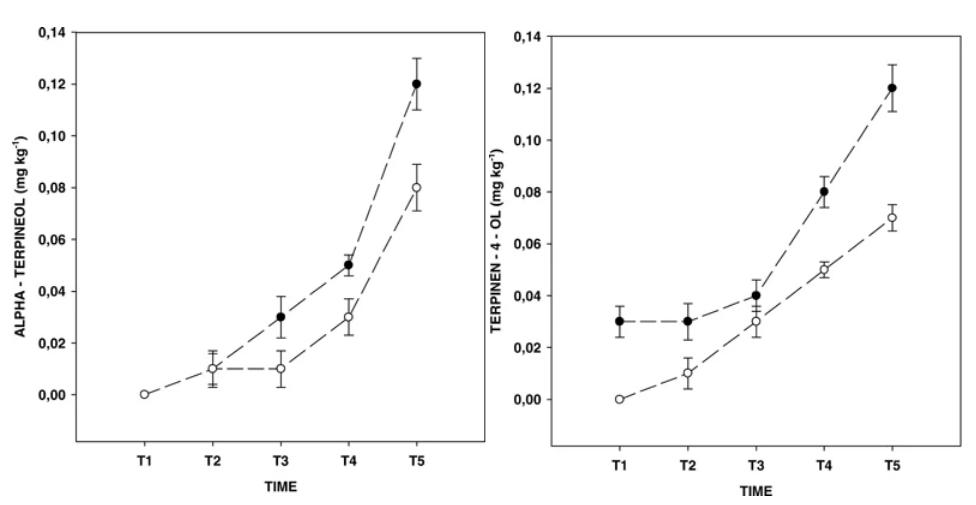What is Terpineol?
Terpineol is a monoterpene alcohol known for its pleasant lilac-like fragrance and significant industrial and pharmaceutical applications. It can be naturally extracted from essential oils of pine and other plants or synthesized industrially. Terpineol is used in fragrances, pharmaceuticals, cleaning agents, and industrial products due to its antimicrobial, anti-inflammatory, and antioxidant properties. It is effective against various pathogens and helps reduce inflammation by modulating immune responses.
Terpineol analysis service is crucial for ensuring the quality, safety, and efficacy of products containing terpineol. By providing detailed insights into the chemical composition and purity of terpineol, this analysis supports various industries, including pharmaceuticals, cosmetics, and cleaning products, in maintaining product standards, regulatory compliance, and optimizing formulations for desired properties and performance.
Terpineol Analysis Service by Creative Proteomics
Creative Proteomics offers diverse plant targeted metabolomics analysis, allowing for a detailed detection of specific metabolites in plant samples. For terpineol analysis service, we utilizes advanced analytical techniques to provide accurate and reliable measurements of terpineol and its isomers, ensuring the quality and efficacy of your products. Our service includes:
Terpineol Identification and Quantification: Utilizing gas chromatography-mass spectrometry (GC-MS), we achieve high sensitivity and accuracy in identifying and quantifying terpineol isomers such as alpha-, beta-, and gamma-terpineol in complex matrices including essential oils and environmental samples.
Terpineol Structural Analysis: We leverage high-resolution mass spectrometry (HRMS) with the mass spectrometer to determine molecular masses and elucidate the structures of terpineol compounds with exceptional accuracy.
Terpineol Metabolic Pathway Analysis: Our service integrates liquid chromatography-mass spectrometry (LC-MS) with HRMS to analyze complex metabolic pathways involving terpineol.
List of Terpineol Analysis (including but not limited to)
| Category |
Compounds |
| Isomers |
α-Terpineol, β-Terpineol, γ-Terpineol, δ-Terpineol, terpinen-4-ol |
| Metabolites |
Terpinolene, Terpin hydrate, Terpineol acetate, α-Dihydrot |
Techniques and Instrumentation for Terpineol Analysis
Gas Chromatography-Mass Spectrometry (GC-MS): Using the Agilent 6890 GC and Agilent 5973 Mass Spectrometer for precise identification and quantification of terpineol isomers by separating compounds based on volatility and mass.
Thermo-Desorption / GC-MS: For air quality applications, using the Thermo Scientific™ TDX-201 Thermo-Desorption System with the Agilent 6890 GC and Agilent 5973 Mass Spectrometer to analyze terpineol in air samples using specialized absorbent tubes.
liquid chromatography-mass spectrometry (LC-MS) with HRMS: Utilizing the Thermo Scientific™ Q Exactive™ Plus Hybrid Quadrupole-Orbitrap™ Mass Spectrometer. The advanced capabilities of LC-MS with HRMS ensure high sensitivity and specificity in detecting and quantifying terpineol and its derivatives within various biological matrices.

Applications of Terpineol Analysis
Pharmaceuticals: Ensuring accurate terpineol content in therapeutic formulations for efficacy and safety.
Cosmetics and Fragrances: Verifying terpineol levels in beauty products to optimize formulations and meet quality standards.
Industrial Products: Assessing terpineol in solvents, cleaning agents, and other industrial applications to ensure performance and compliance.
Environmental Monitoring: Measuring terpineol concentrations in environmental samples for regulatory compliance and impact assessment.
Sample Requirements for Terpineol Analysis
| Sample Type |
Collection Method |
Storage Conditions |
Quantity Required |
| Plant Material |
Fresh or dried plant material |
Store in a dry, cool place in sealed bags |
Minimum 5 g |
| Essential Oils |
Direct extraction or sampling from product |
Store in a cool, dark place in sealed containers |
Minimum 1 mL |
| Environmental Samples |
Collected using thermo-desorption tubes or air sampling devices |
Store at ambient temperature until analysis |
Minimum 10 L of air volume |
| Industrial Products |
Sample directly from the product or process |
Store in original containers with minimal exposure to air |
Minimum 1 g |
Q1: How long does the terpineol analysis process take?
A1: The duration of the terpineol analysis process varies based on the complexity of the sample and the specific analysis required. Generally, routine terpineol analysis is completed within a short timeframe. However, more complex or large-scale analyses may necessitate additional time.
Q2: Can Creative Proteomics handle custom or non-standard samples?
A2: Yes, Creative Proteomics is equipped to handle custom and non-standard samples. If you have unique requirements or specific conditions for your terpineol analysis, please contact us to discuss your needs. Our team will work with you to tailor the analysis to meet your specifications.
Q3: How can I access my analysis results?
A3: Clients can access their analysis results through our secure online portal. Results are typically provided in detailed reports that include quantitative data, identification of terpineol isomers, and any relevant observations. We also offer the option to receive results via email or hard copy upon request.
Case. Limonene, linalool, α-terpineol, and terpinen-4-ol as quality control parameters in mandarin juice processing
Background:
Citrus juices are a popular and significant product, the quality of these juices is influenced by the processing methods and storage conditions. The goal of the citrus processing industry is to replicate the fresh product's characteristics while ensuring extended shelf life. However, heat treatment and storage can adversely affect the aroma and flavor of citrus juices, leading to off-flavors and alterations in volatile compounds.
Samples:
The study analyzed mandarin juices from two Spanish cultivars, Clemenules and Fortuna, collected from the same region and under identical growing conditions. The fruit was harvested in winter, and the juices were processed and analyzed for their volatile compound content. The samples were categorized as follows:
T1: Freshly squeezed juice
T2: Juice pasteurized for 20 seconds at 98°C
T3, T4, T5: Juice stored at 2°C for 20, 40, and 60 days, respectively
Technical Methods Procedure:
Extraction and Quantification: Volatiles were extracted from 200 ml samples using dynamic headspace and analyzed by GC-MS.
GC-MS Analysis: A Shimadzu GC-17A with a mass spectrometer was used, employing a Supelcowax-10 column and a temperature gradient. Compound identification was based on mass spectra and reference standards.
Statistical Analysis: Data from five replicates were analyzed using ANOVA and Tukey's test with SPSS 12.0, considering results significant at p≤0.05.
Results:
Clemenules juices contained higher concentrations of d-limonene, linalool, α-terpineol, and terpinen-4-ol compared to Fortuna juices.
After pasteurization and storage, d-limonene and linalool concentrations decreased, while α-terpineol and terpinen-4-ol concentrations increased.
 α-Terpineol and terpinen-4-ol concentrations (mg kg−1) in mandarin juice from Clemenules (•) and Fortune (○) cultivars; before pasteurization (T1), after pasteurization (T2), at 20, 40 and 60 days of storage (T3, T4, T5) at 2°C, respectively
α-Terpineol and terpinen-4-ol concentrations (mg kg−1) in mandarin juice from Clemenules (•) and Fortune (○) cultivars; before pasteurization (T1), after pasteurization (T2), at 20, 40 and 60 days of storage (T3, T4, T5) at 2°C, respectively
Reference
- Pérez-López, et al. (2006). "Limonene, linalool, α-terpineol, and terpinen-4-ol as quality control parameters in mandarin juice processing." European food research and technology 222: 281-285.



 α-Terpineol and terpinen-4-ol concentrations (mg kg−1) in mandarin juice from Clemenules (•) and Fortune (○) cultivars; before pasteurization (T1), after pasteurization (T2), at 20, 40 and 60 days of storage (T3, T4, T5) at 2°C, respectively
α-Terpineol and terpinen-4-ol concentrations (mg kg−1) in mandarin juice from Clemenules (•) and Fortune (○) cultivars; before pasteurization (T1), after pasteurization (T2), at 20, 40 and 60 days of storage (T3, T4, T5) at 2°C, respectively



